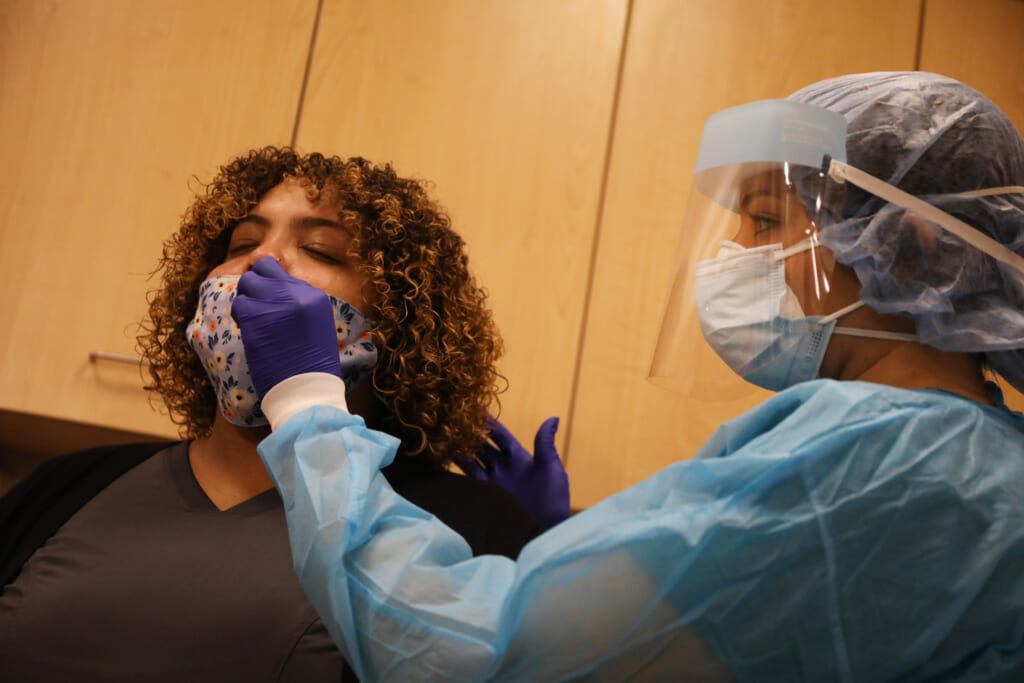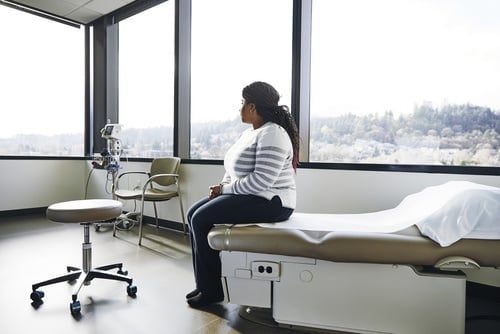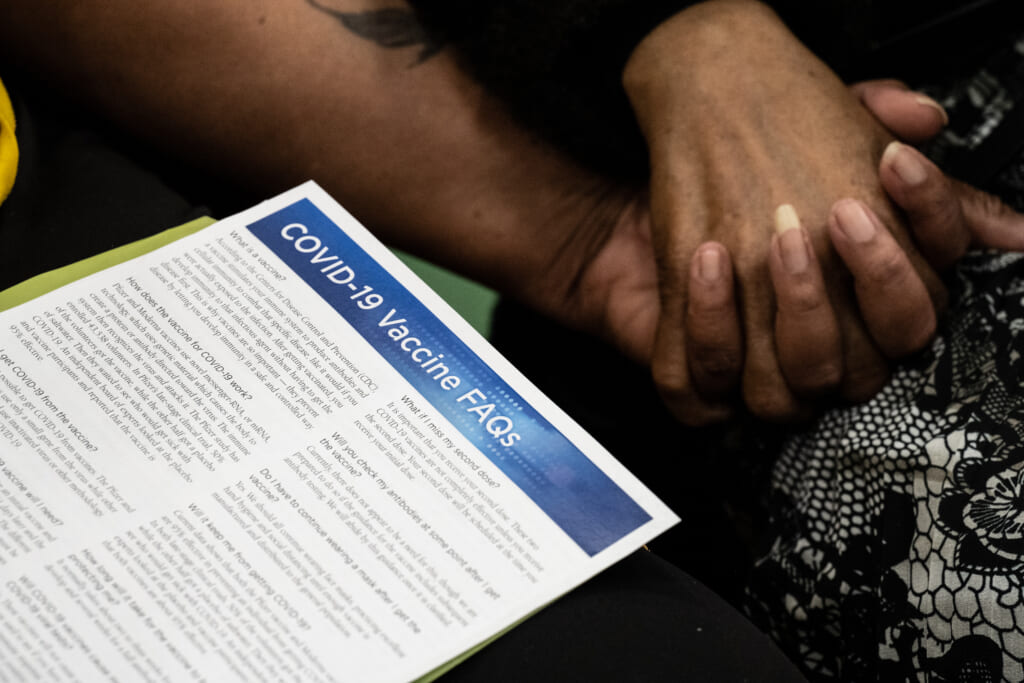Condoms, masks and the tale of two viruses — COVID and HIV/AIDS — harming the Black community
Masks for the moment could be the new condom — another form of protection against infection from a virus threatening Black communities at an alarming rate.
Are masks the new condoms? It’s an odd question at face value, but PREP activists say it’s an entry point to a conversation worth having in the Black community.
When presented with the comparison of masks to defend against the spread of COVID-19 and condoms to do the same for HIV/AIDS, David Johns, executive director of the National Black Justice Coalition tells theGrio it is “logical and thoughtful and flies in the face of not only good reason, but I think it’s amplifying a lot of confusion that has come from the CDC, especially as of late.”

With the rise of the Delta variant in news headlines, the public has pondered on CDC guidelines that stipulate mask-wearing is optional for vaccinated Americans. Now, just two weeks after issuing these guidelines, the CDC is reversing course and recommending that people vaccinated for the coronavirus resume wearing masks indoors under certain circumstances.
But much like the HIV/AIDs public health crisis of the 1980s and 1990s, guidelines and opinions on testing and preventative measures have been politicized to such an extreme that public education efforts are regularly scrutinized.
Since the onset of the pandemic in 2020, NBJC has pushed the Black community to study the parallels of the public health responses to HIV/AIDs and COVID-19. The group serves as an advocacy arm of Black lesbian, gay, bisexual, transgender and queer (LGBTQ) people, including people living with HIV/AIDS.
Adding to the likeness of the two viruses as it relates to public health efforts, Johns contends community taboos regarding lifestyle allow both COVID cases and HIV/AID statuses to fly under the radar.
“People are testing positive or they’re not testing at all because they don’t want to know the result,” Johns added. “They don’t want to know the result because they don’t want to tell somebody … it’s the shame around and the stigma associated with the virus that is killing Black people.”
It’s not new that people are avoiding HIV/AIDs screenings, but this approach is manifesting in COVID detection, which compounds the groundwork public health experts must combat in Black communities.

“We are not having as many conversations as we can as Black folks about either disease or epidemic,” said Johns. “Whether that is sitting, having conversations about HIV and or protection prophylactics or PREP or mask or our vaccination or any of the other things that we otherwise should be talking about based on health and science and where we are as a people.”
Kenyon Farrow, managing director of advocacy & organizing at PrEP4All sees another intersection related to the two viruses — aversion to scientific evidence.
“We have great sort of scientific tools in terms of biomedicine and people still not actually believe in them,” Farrow said. “Seeing somebody with a mask or wearing a condom, I guess that, you know, you think about it that way, becomes a sort of visual, like just being able to see the sort of visual marker of protection. Whereas not seeing the vaccine or not seeing, you know, HIV medication for prevention or treatment, you know, people don’t quite believe science.”
To combat misinformation regarding vaccines and COVID-19 at large, the Biden-Harris administration has enacted several approaches to expand access to vaccines, which included a focus on locations, times of administration and even access to doctors for questions. But still, a significant gap in racial data is proving that gaining Black America’s trust and buy-in is not as simple as fixing an issue of access.
“The thing that is happening is that democratization of healthcare resources is being hoarded by those who have the most privilege in ways that are disadvantaging, again, people with the most multiply marginalized identities,” Johns highlighted. In turn, this is underscoring a gap in care and access that similarly hit the Black community during the height of the HIV/AIDs epidemic.
Dr. April Kapu, president of the American Association of Nurse Practitioners (AANP) contends that “simply saying, go see your provider and ask these questions” further marginalizes communities of color during the pandemic because “they don’t have a provider to go to” in most cases. The patient-doctor relationship prior to the pandemic was nonexistent for many people of color due to low rates of insured people in their respective populations.

“When we’re having these conversations about the vaccine, we’re also starting to have that conversation of are you getting regular health care? Do you see someone regularly for your health care maintenance or to prevent disease down the road?” Kapu added.
Again, insurance and established relationships with physicians is a lesson the Black community can learn from the HIV/AIDs public health response. The expansion of the American Care Act to HIV/AIDS-positive individuals is an example of how the Biden administration’s open enrollment during the pandemic can shift the health gap in the Black community and drum up vaccination numbers.
According to the American Journal of Managed Care, “Following implementation of several major provisions of the Affordable Care Act (ACA) in 2014, health insurance coverage for HIV-positive individuals increased, leading to sustained viral suppression in some instances and improving their ability to increase access to often life-saving services.”
In 2018, most adults with HIV received their insurance coverage through Medicaid (40%), followed by private insurers (35%), Medicare (8%), and others (7%). This increase in an insured vulnerable population translated into viral suppression.

At the moment, viral suppression is a term that is not often associated with COVID-19, but appears to be obtainable through mass vaccination and re-adopting of masks mandates indoors.
As mentioned on CNN’s Sunday show, Dr. Anthony Fauci admitted that the Centers for Disease Control and Prevention (CDC) is examining whether to reinstate mask guidance even for fully vaccinated people in public.
“This is under active consideration,” Fauci said in response to being asked if masks should be brought back for vaccinated Americans.
Masks for the moment could be the new condom — another form of protection against infection from a virus threatening the Black community at an alarming rate.
Have you subscribed to theGrio’s “Dear Culture” podcast? Download our newest episodes now!
TheGrio is now on Apple TV, Amazon Fire and Roku. Download theGrio.com today!
The post Condoms, masks and the tale of two viruses — COVID and HIV/AIDS — harming the Black community appeared first on TheGrio.
from TheGrio https://ift.tt/3BNqrA9
No comments: